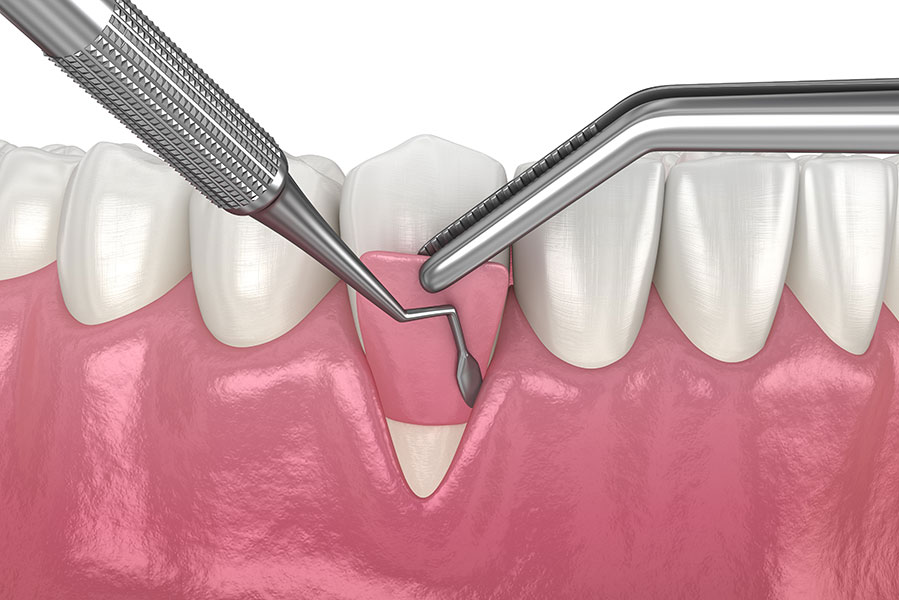Here at the facilities of Dr. Suzanne Caudry, we believe in keeping our followers informed. Everyone benefits from a little extra knowledge, especially when it comes to the world of dentistry. Day after day, we encounter patients who aren't even aware of the many new, improved, and cutting-edge procedures that are available to them. If they do happen to know about them, well, their idea is probably informed by their visits to the dentist fifteen, twenty, or thirty years ago.
These reasons and more are why we decided to devote a little bit of time to the subject of soft tissue grafting. While some might be vaguely familiar with this procedure, few know the various reasons why one might seek out a gum graft, and even fewer how straightforward our approach to grafting is.
Throughout this post, we'll cover soft tissue grafting. We will discuss the reasons why someone might need or want a graft, the many benefits of grafts, and our cutting-edge approach to the whole procedure. Should you have any questions, don't hesitate to contact our helpful team at 416 928 3444.
What Is Soft Tissue Grafting?
Soft tissue grafting has many names. You might hear people refer to it as gingival grafting, gum grafting, or periodontal plastic surgery, for instance. No matter the name, however, the aim of the procedure is often the same: to cover exposed root surfaces and restore gums to their former glory. Plain and simple.
The traditional approach involves using the patient's own tissue in the grafting process. Rather than remove the top layer of skin from the incision area, we create a flap in the roof of the mouth and remove tissue from beneath the top layer. While this approach often yields excellent outcomes, many clients are wary of the fact that the procedure requires two surgical sites.
We have trained anesthetists on-site to address the discomfort and anxiety that might arise during the grafting procedure. Upon request, they will administer the appropriate levels of sedation needed to ease the surgical process for you. That said, we assure you that our approach to the traditional graft eliminates much of the discomfort associated with techniques from days past. Here at Dr. Caudry's facilities, we strive for professional growth in the name of patient-centered care.
How Long Will My Gum Graft Take?
For those who dread spending an entire day in the dentist's chair for their graft, do not worry. In our facilities, gum grafting surgery only takes an hour for one to three teeth.
Post-Operative Care for Gum Grafts
While the initial surgical procedure or procedures may only take a few hours, the recovery period for a gum graft can be quite longer than that. But don't worry-we will tell you everything you need to know to ensure your gums heal properly. Before you leave our facilities, we will provide you with all the necessary information, and address all your most pressing concerns.
After you have received your tissue graft, you must remain on a soft food diet for a period of six weeks. Once this six-week period has passed, your gums will be ready for your normal eating habits. However, it may take roughly one year for your gum tissue to fully recover. We strongly encourage you to brush and floss with care, and never hesitate to contact our team if you experience any difficulties or unusual discomfort during the recovery period.
Why Might I Need a Tissue Graft?
We graft tissue onto the gums of our patients when gum tissue has been lost due to tooth decay or other types of tissue-related damage. Tooth decay often leads to gum recession. When gum recession occurs, the teeth and roots lose that healthy barrier of tissue that protects them from bacteria and unnecessary dental trauma.
With root exposure comes increased sensitivity to certain foods and liquids and the possibility of tooth decay. Gum recession might arise due to grinding, braces, or poor dental hygiene. Sometimes gums may even recess because someone is brushing too much or brushing too aggressively. While brushing might seem like the most straightforward task in your morning routine, many people use their toothbrush in a way that harms their teeth and gums.
With the help of a gum graft and a crash-course in oral hygiene, we can solve these problems in little time. Whether your gums are too thin or they have recessed, we will be able to fix them.
Benefits of the Gum Graft
There are many benefits to the soft tissue graft. Some of which include the following:
- Improved smile
- Improved breath
- Improvement in tooth sensitivity
- Decreased risk in bone and tooth loss
- Prevents tooth decay
Contact Dr. Caudry Today
Do you have any other questions about gum grafts that you'd like us to address? Don't hesitate to contact us. Our phone number is 416 928 3444, and we are always ready to take your call.

